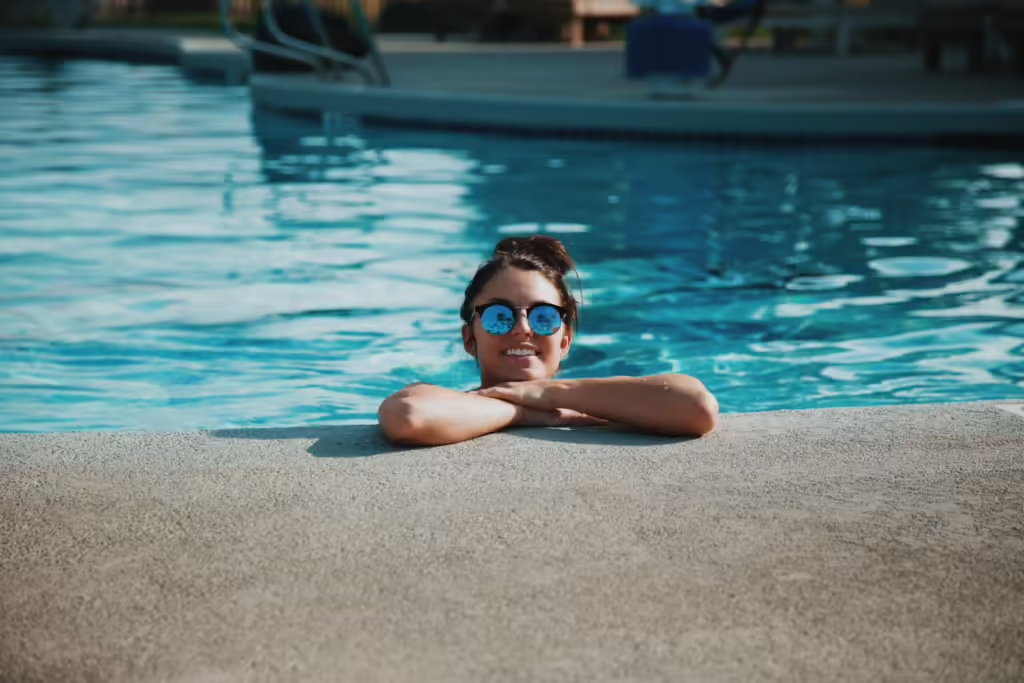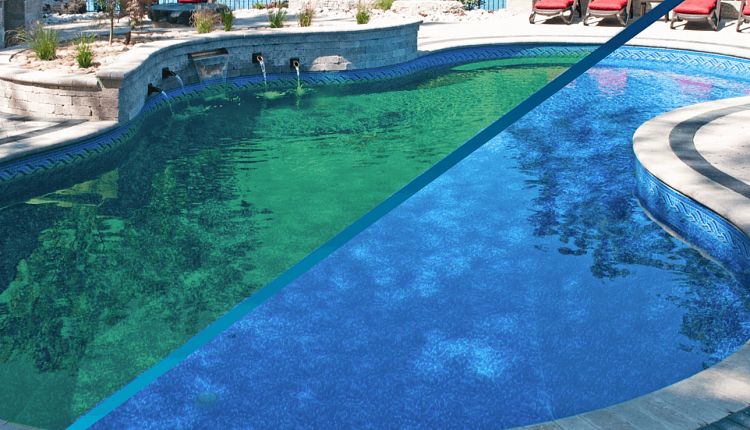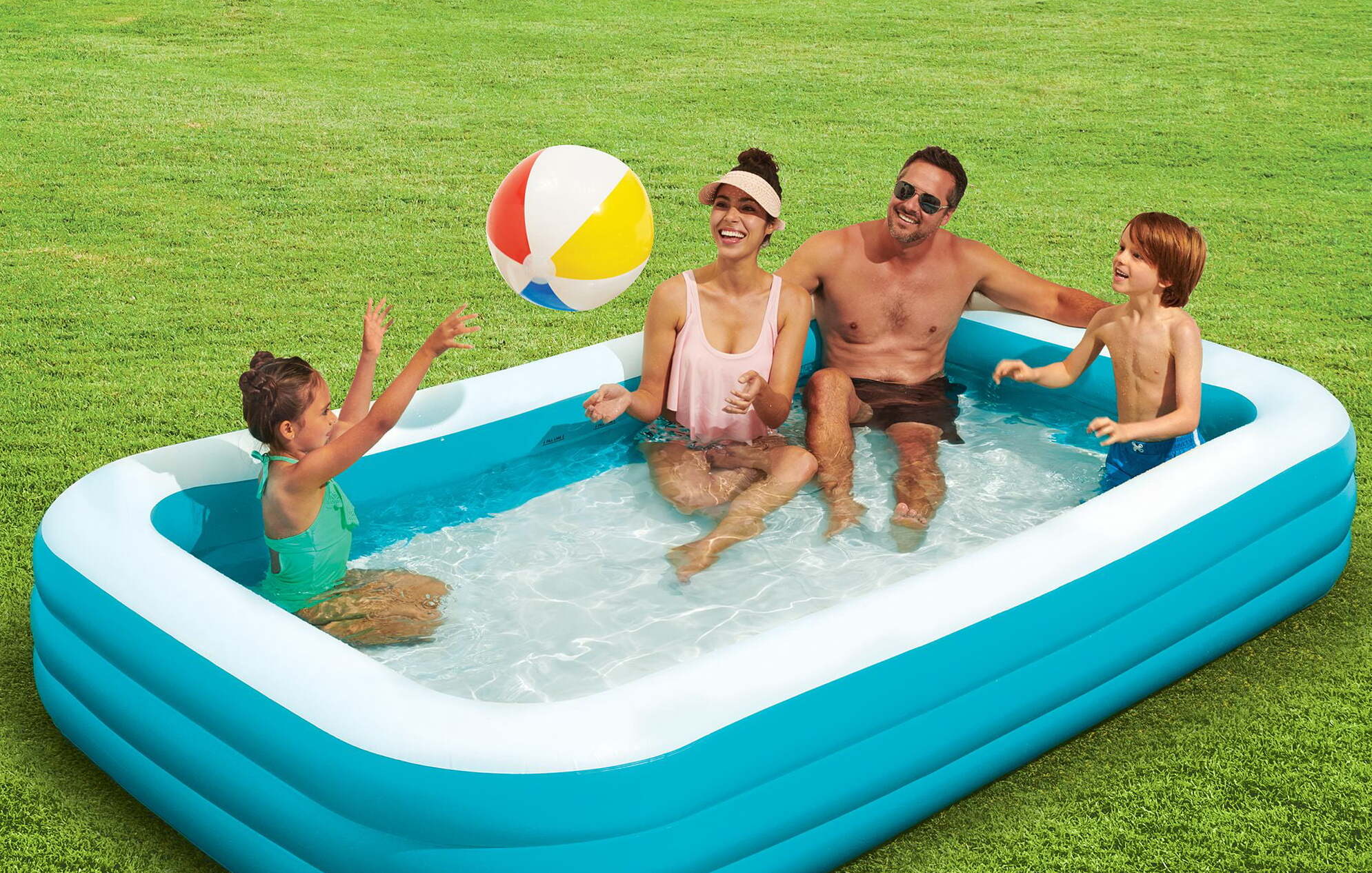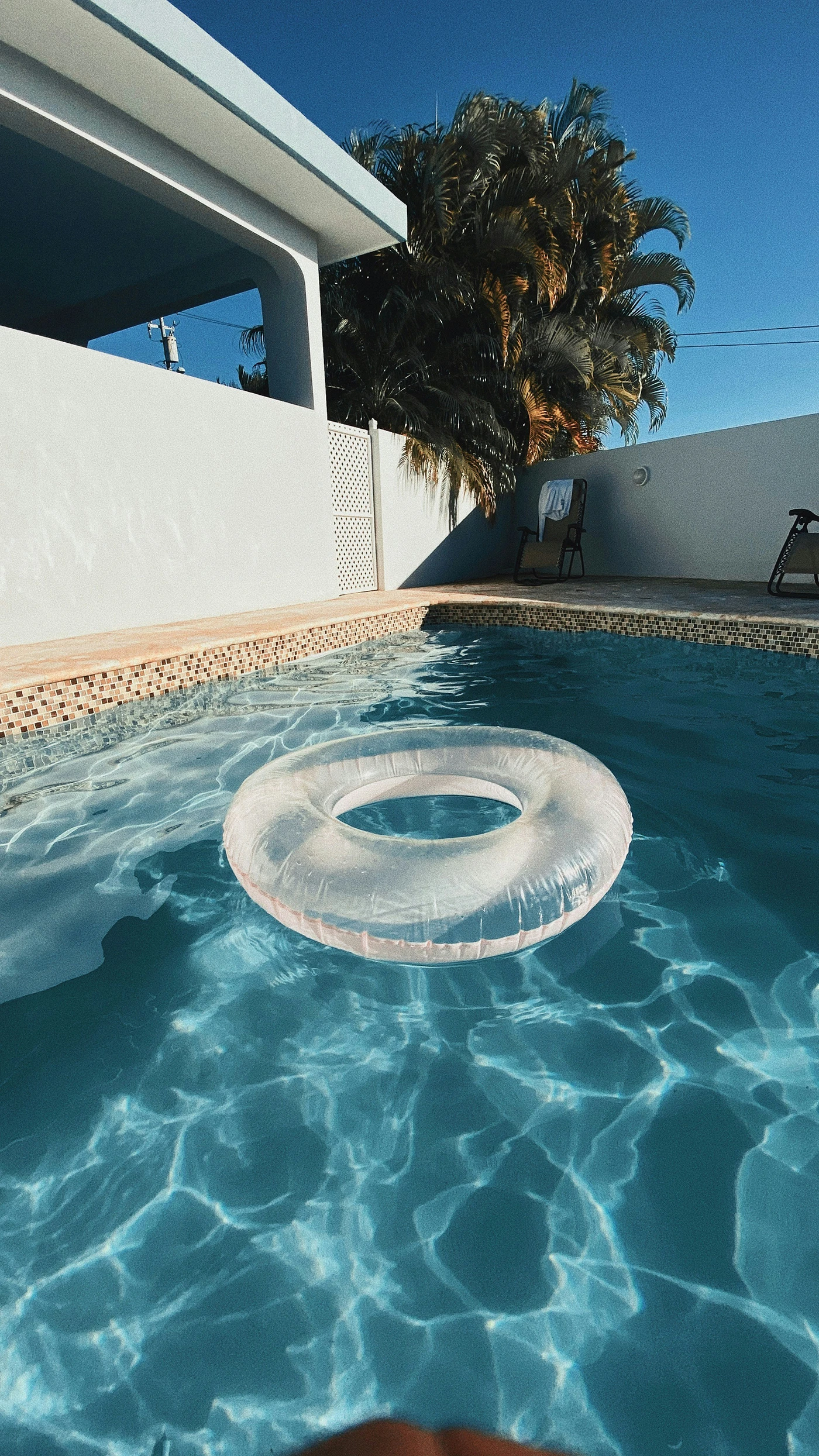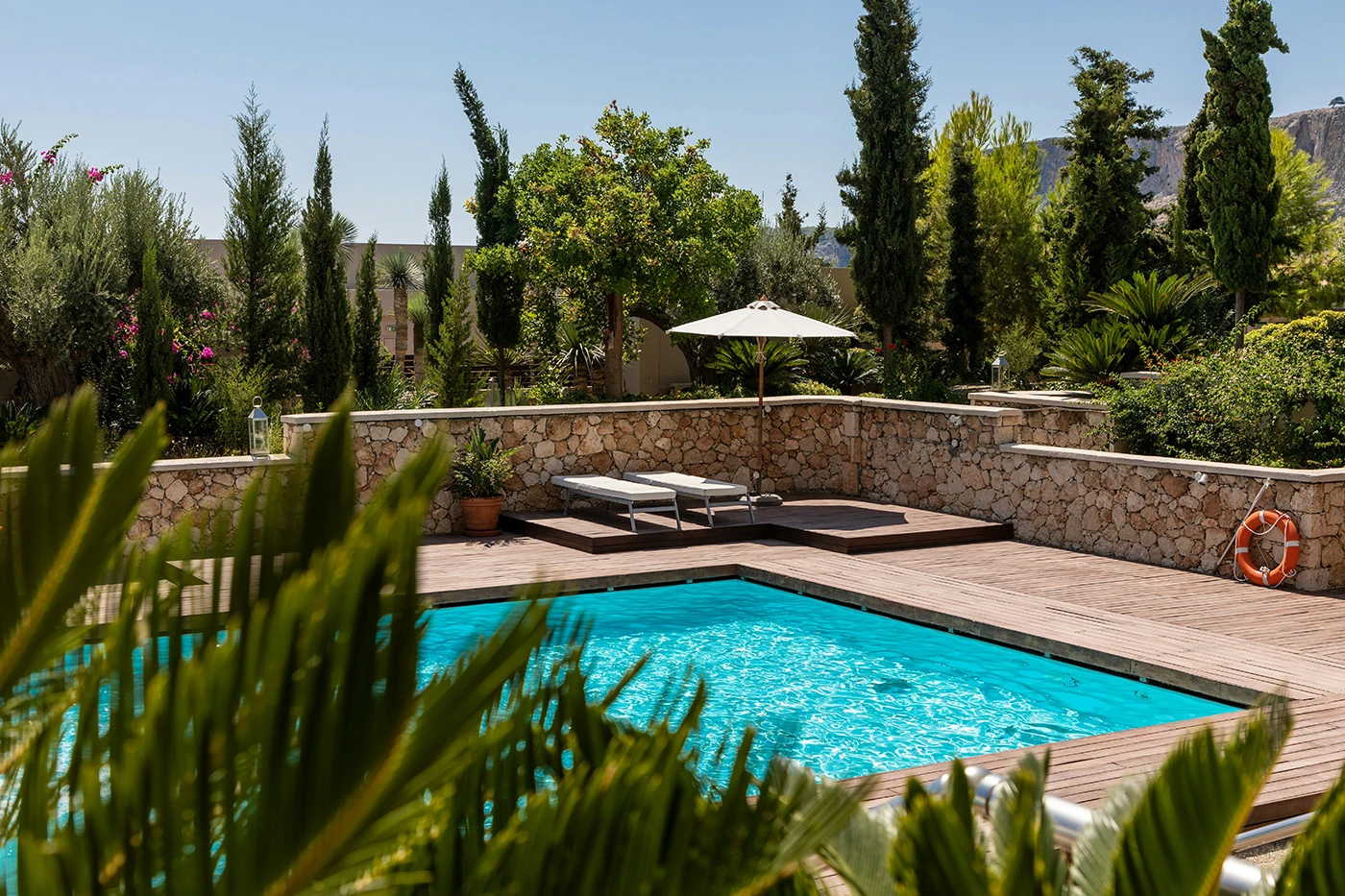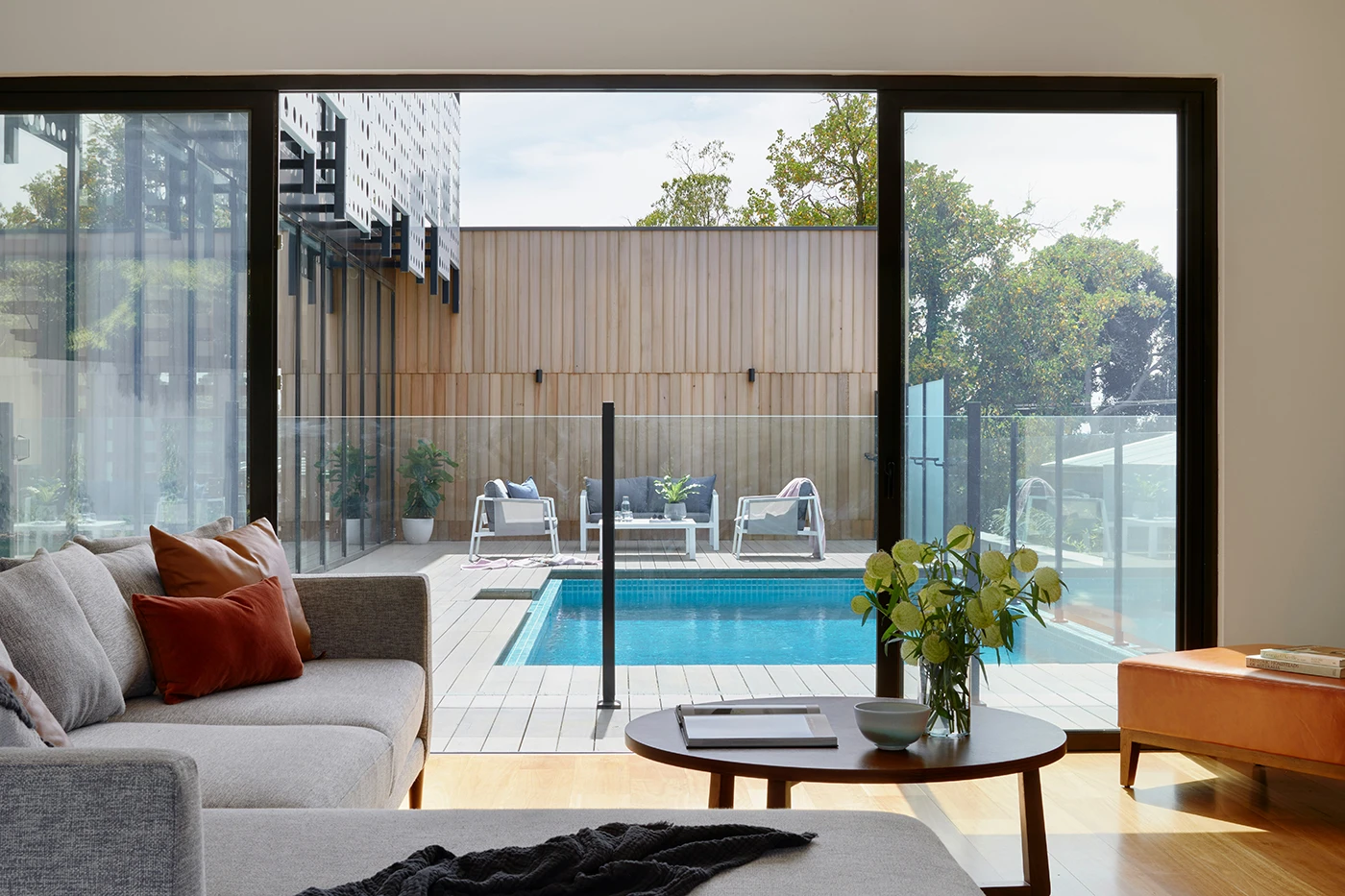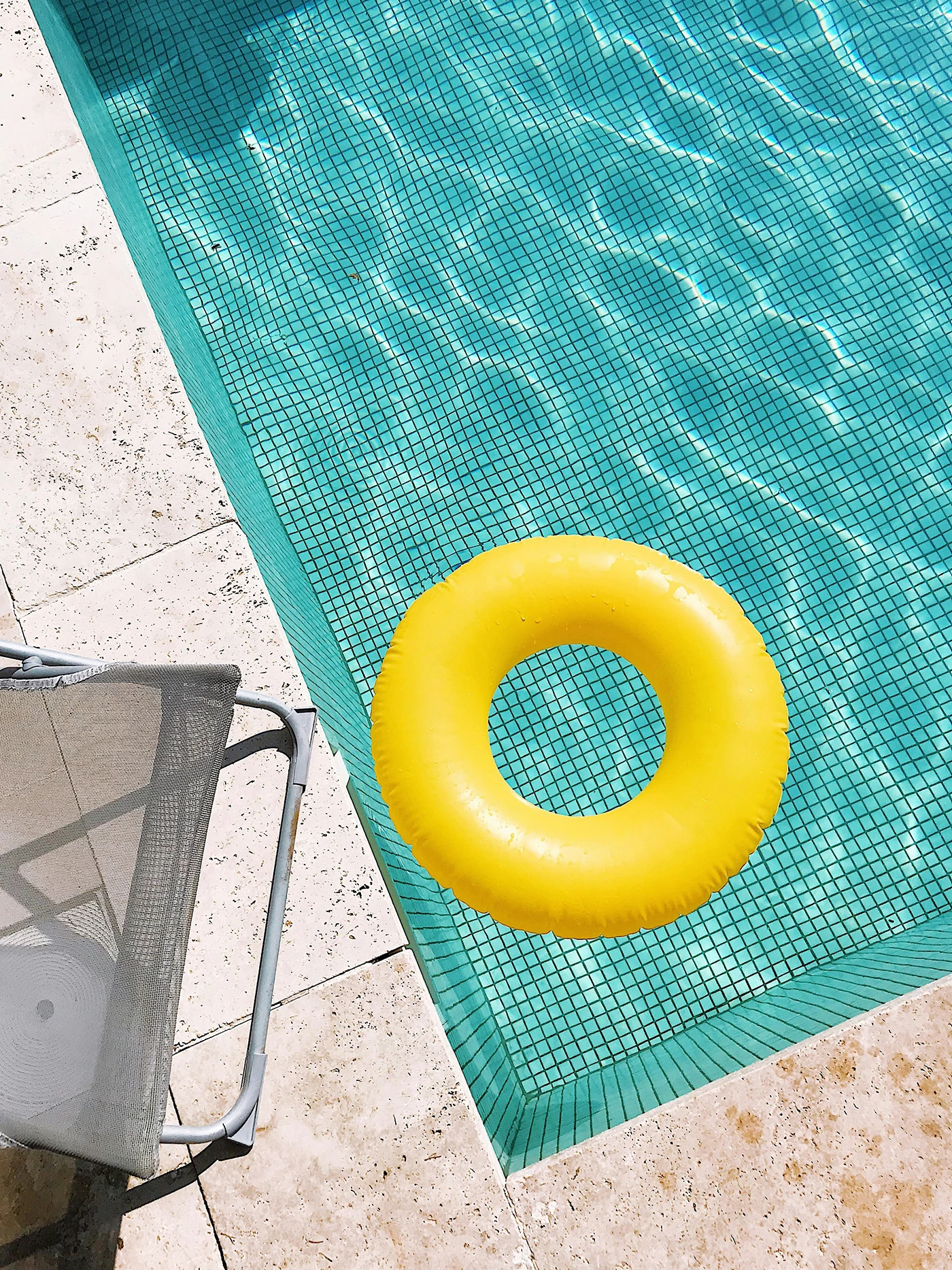As a pool owner, you might wonder how to prevent chlorine from dissipating under the sun. Welcome to our ultimate guide to cyanuric acid, the secret to stabilizing your pool’s sanitizer against UV rays. We’ll show you how to manage cyanuric acid levels effectively, ensuring your pool remains a clean and inviting space all season long.
Key Takeaways
- Cyanuric acid (CYA) is essential for outdoor pools to stabilize chlorine against UV rays, but maintaining appropriate CYA levels is crucial, as too much can reduce chlorine’s effectiveness.
- The ideal CYA level in a standard outdoor pool is between 30-50 ppm, while saltwater pools often require 60-80 ppm; regular testing and adjustment of CYA levels are necessary for optimal water quality.
- Managing CYA levels involves testing with kits or strips and adjusting by adding cyanuric acid (to raise) or diluting the pool water (to lower), with safety precautions taken when handling chemicals.
Decoding Cyanuric Acid: The Chlorine Protector
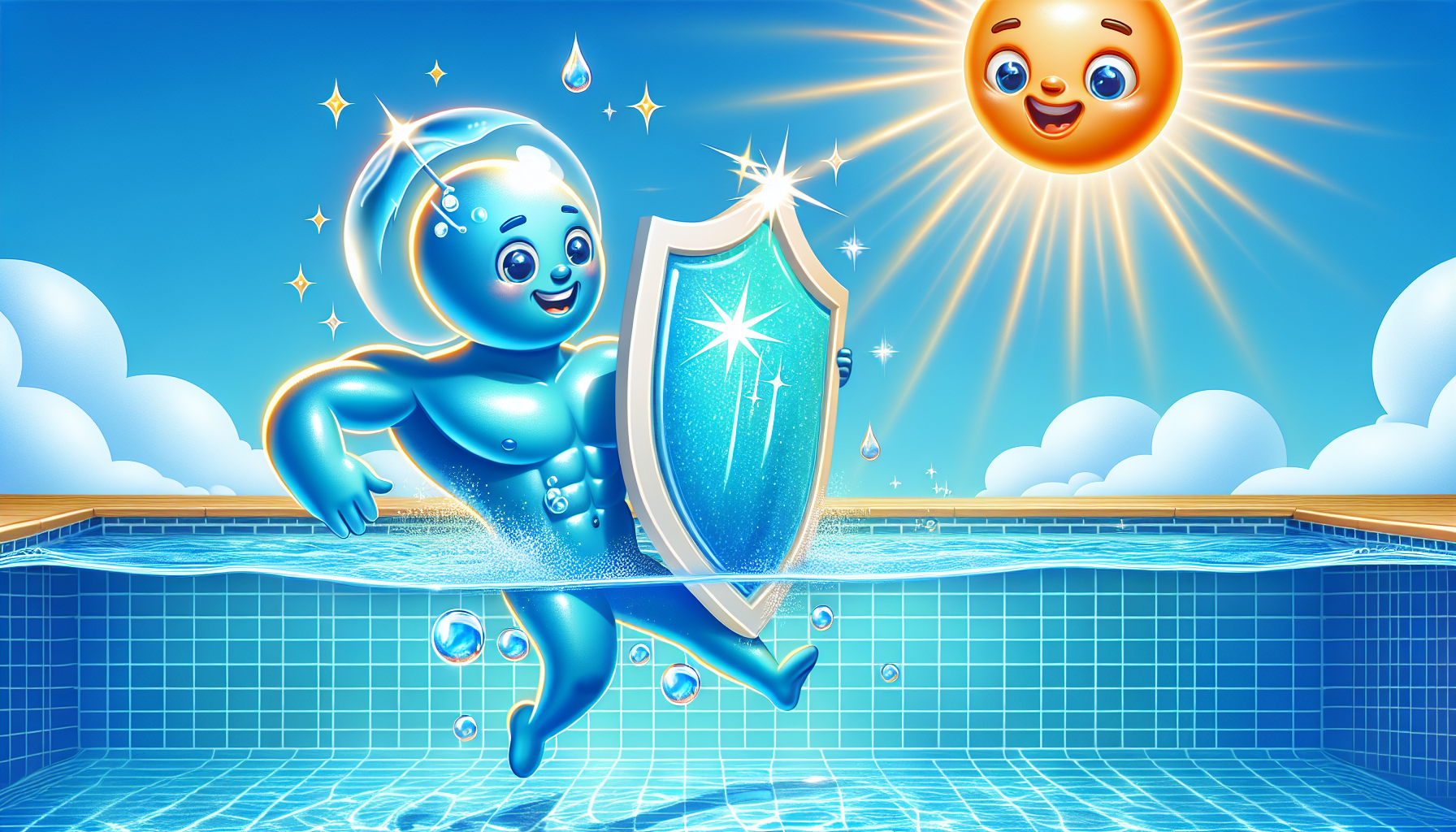
Cyanuric acid serves as an invisible barrier, protecting your pool’s sanitizer, chlorine. Known in the pool community as the pool conditioner or stabilizer, cyanuric acid is indispensable for outdoor swimming pools. It functions by stabilizing chlorine, equipping it to battle contaminants, undeterred by the sun’s UV onslaught. This guardian forms a weak, yet crucial bond with hypochlorous acid, the active form of chlorine, transforming it into a UV-resistant sentinel that maintains the disinfecting power longer than unprotected chlorine ever could. Without cyanuric acid, the pool would lose about 35% of its free chlorine each hour to UV rays, turning the battle for clean water into a losing fight.
However, cyanuric acid isn’t without its complexities. While cyanuric acid protects chlorine, it also poses a balancing act; too much can reduce chlorine’s disinfection power and oxidation reduction potential (ORP), making careful management a must for a healthy pool. It’s the delicate dance between cyanuric acid levels and chlorine effectiveness that keeps your pool water pristine.
Therefore, the addition of cyanuric acid isn’t simply about pouring chemicals into the water; it’s a delicate process that guarantees a welcoming, bacteria-free pool.
Understanding Pool Chemistry: The CYA-Chlorine Relationship
Navigating pool chemistry requires a keen understanding of the symbiotic relationship between cyanuric acid (CYA) and free chlorine. This duo works in tandem: CYA shields the chlorine, allowing it to perform effectively as the pool’s primary sanitizer. The CYA levels in your pool are the directors of this show, dictating just how much free chlorine your pool needs to remain clean and safe. Without enough CYA, chlorine becomes vulnerable, quickly succumbing to the sun’s UV rays, leaving your pool defenseless.
Adding liquid chlorine to your swimming pool isn’t just about boosting sanitization—it also incrementally raises the CYA level, thanks to chlorinated cyanurates, which dissolve and establish a delicate equilibrium in the swimming pool water. The result is a blend of:
- Cyanuric acid
- Dissociation products
- Free chlorine
- Chlorinated cyanurates themselves
All interplaying to keep your pool’s waters inviting and algae-free. This chemical interplay demands accuracy, particularly for outdoor pools where UV exposure necessitates greater need for stabilized chlorine and proper use of pool chemicals.
Optimal Cyanuric Acid Levels for Your Pool
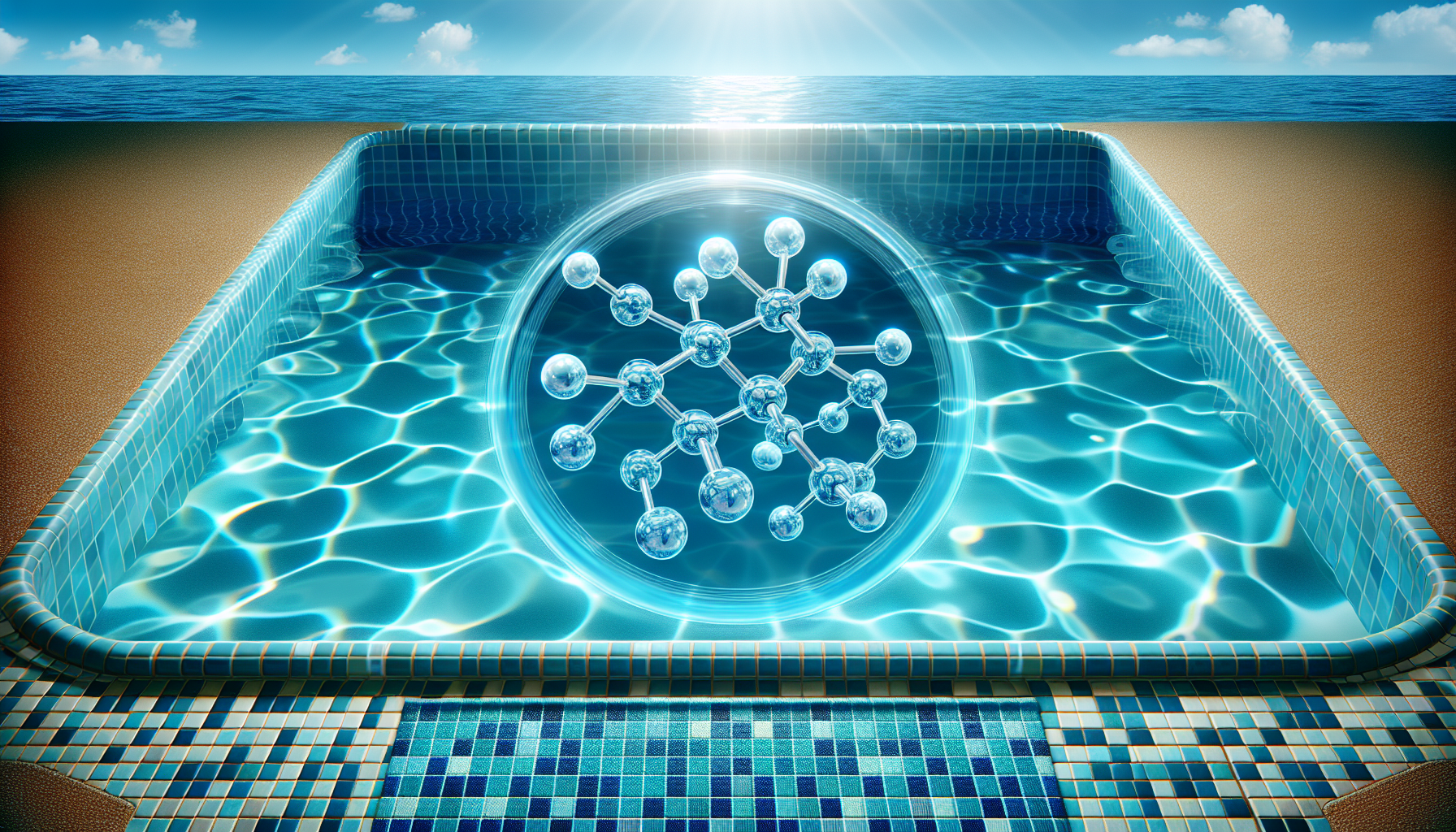
The quest for the perfect pool begins with achieving optimal cyanuric acid levels, which vary depending on your pool’s type and needs. For the regular chlorine-sanitized outdoor pool, the sweet spot for CYA is between 30-50 parts per million (ppm), balancing chlorine’s stability with its ability to disinfect.
Saltwater pools, with their unique chlorine generation process, typically call for higher CYA levels, around 60-80 ppm, to ensure the chlorine produced can withstand the sun’s amplified assault. And for pools basking under the sun for extended periods, maintaining a CYA level in this higher range is advisable to protect the chlorine from rapid degradation.
Measuring CYA: Test Kits and Strips
Regular testing of CYA levels is vital to maintain your pool’s chemical balance. Imagine standing poolside, armed with a test kit or strip, playing the role of a scientist in your backyard. One popular method is Taylor’s turbidity test, where you fill a comparator tube with a water sample, add a reactive reagent, and look for a black dot to disappear, thus reading the CYA concentration. It’s a simple yet effective way to ensure your levels are within the optimal range.
However, if you suspect your CYA levels are off the charts, you might need to employ a different testing strategy. High CYA concentrations can be tricky to measure accurately with standard tests, so it’s important to choose a method that can handle the excess without compromising precision. Keeping a vigilant eye on these levels is a key step in maintaining the delicate balance that allows your pool to remain a sparkling sanctuary for swimmers.
Adjusting CYA Levels: When and How
With changing seasons and as your pool emerges from its winter rest, modulating CYA levels becomes an integral part of the springtime pool opening routine. You’ll likely find yourself tweaking these levels once or twice a year to keep up with the demands of your aquatic retreat. To raise CYA levels, you can introduce pure cyanuric acid to the pool, available as a conditioner or stabilizer, either directly or through stabilized chlorine products. The process is simple: dissolve the stabilizer in water and pour it into your pool’s skimmer, letting the pump circulate it thoroughly for even distribution.
On the flip side, if you’re facing the conundrum of high CYA levels, you may need to resort to more sophisticated measures like reverse osmosis filtration. This method can effectively lower CYA while also addressing issues like calcium hardness and total dissolved solids, albeit with the additional cost of creating wastewater. Bear in mind that adding stabilizers can influence the pool’s pH levels, so it’s wise to monitor and adjust as necessary to maintain a harmonious water chemistry.
The Science of Stabilized Chlorine
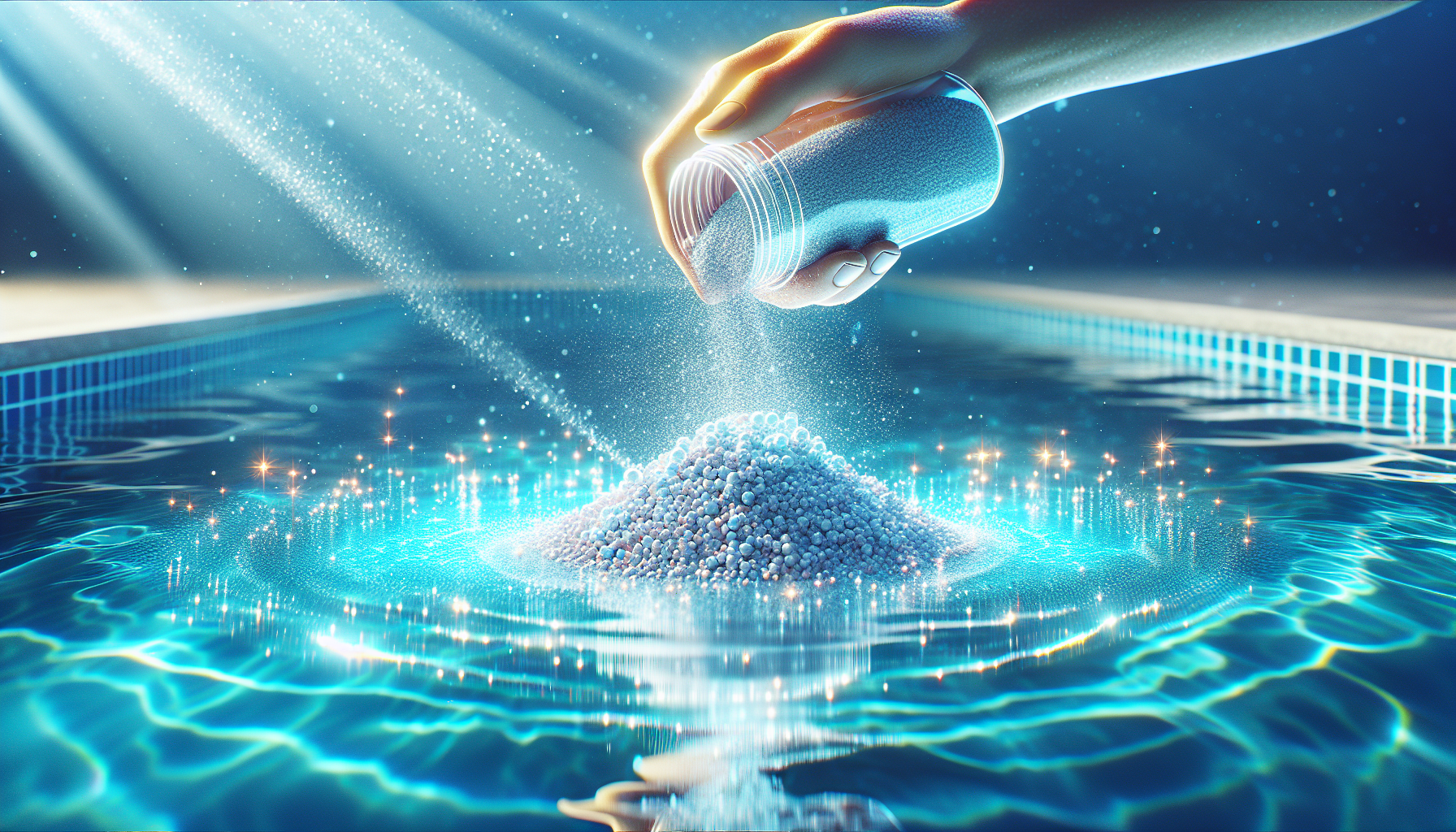
A deeper exploration of stabilized chlorine sheds light on the workings of cyanuric acid. When you introduce compounds like trichlor or dichlor, often in granule or tablet form, you’re not just dosing your pool with chlorine; you’re also incrementally increasing its CYA levels. These stabilized chlorine products contain a built-in dose of CYA, which slowly releases into the water, ensuring a steady defense against the sun’s UV rays. It’s a slow and steady process that keeps your pool’s sanitizer levels in check.
Moreover, when you shock your pool with stabilized chlorine, you’re simultaneously giving your CYA levels a boost. This dual action is a boon for maintaining the delicate balance required for crystal clear waters. The science behind these products, including the use of a pool stabilizer and chlorine stabilizer, is a testament to the ingenuity of pool chemistry, allowing for a self-regulating system that maintains a sanitized environment with minimal fuss. In fact, using pool shock effectively contributes to this balance.
Balancing Act: Managing High and Low CYA Levels
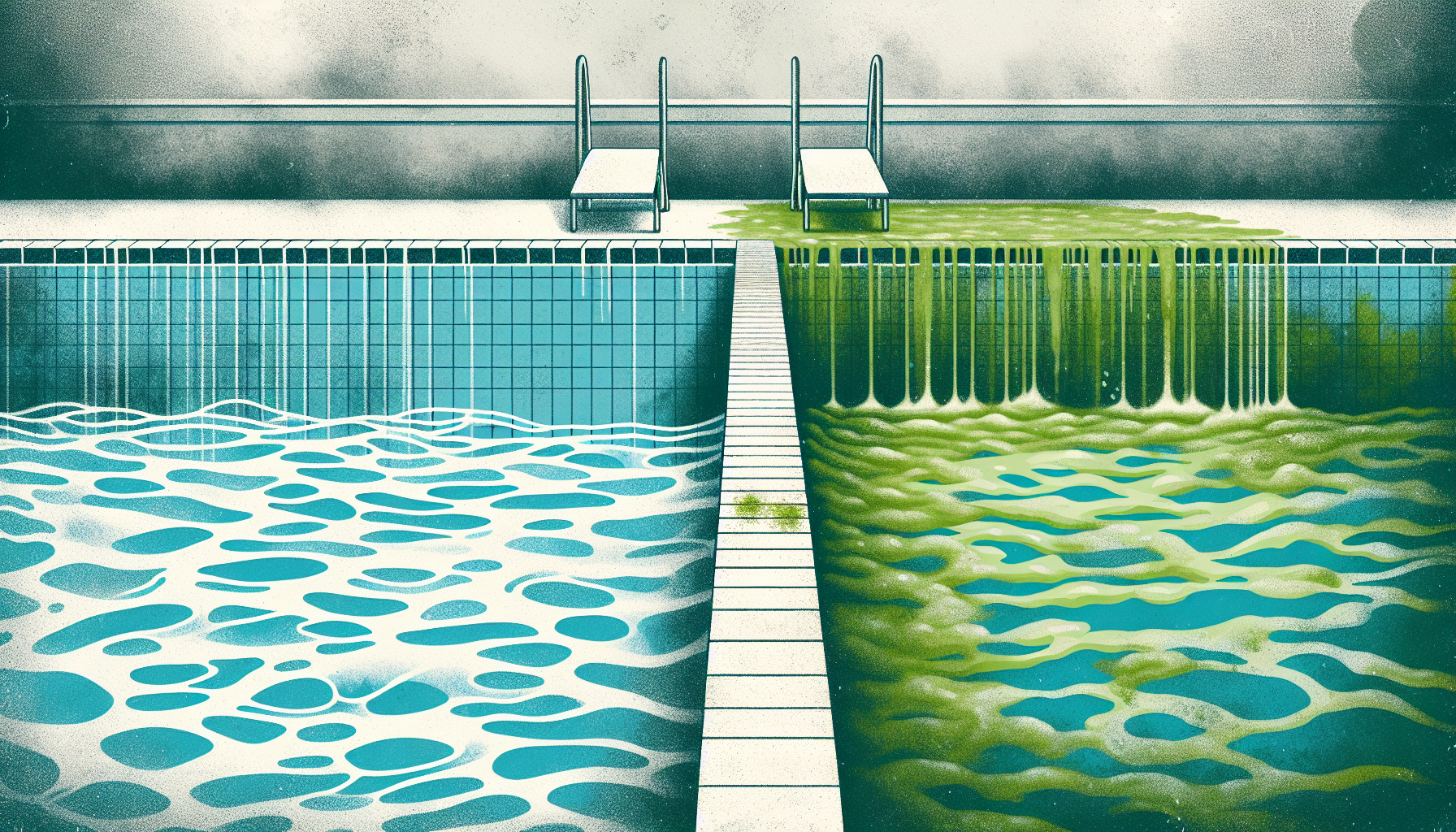
Maintaining an appropriate amount of CYA is pivotal to the balance of your pool’s ecosystem. Too much, and you risk chlorine lock, where the sanitizer struggles to keep up with the demands of a clean pool, potentially leading to murky waters and unwanted algae blooms. Conversely, too little CYA can leave chlorine defenseless against UV rays, causing it to dissipate rapidly and leaving your pool vulnerable to contaminants.
To keep your aquatic haven in top form, it’s crucial to strike a balance, employing methods such as partial water replacement for high CYA or supplementing CYA when it’s low.
Addressing High CYA: Dilution and Filtration
When the CYA levels in your pool climb too high, it’s time for action. The most effective way to bring down these levels is through the simple act of dilution: partially draining your pool and refilling it with fresh water. Before you begin this process, halt the addition of any more cyanuric acid or stabilized chlorine, to prevent further exacerbating the issue.
Once you’ve diluted the pool, run the pump to circulate the new water, and retest the CYA levels to ensure you’ve hit the sweet spot for optimal sanitization.
Correcting Low CYA: Adding the Right Amount
Confronted with low CYA levels, the solution is to add the right amount of stabilizer. But before you do, arm yourself with a liquid test kit or test strips to gauge the current CYA concentration and adjust the pool’s pH and total alkalinity accordingly. The addition of cyanuric acid requires precision; for example, adding just 3 ounces of stabilizer to a 10,000-gallon pool will elevate CYA levels by 10 ppm.
Remember, safety first: don protective gear, such as goggles and gloves, to shield yourself from the chemical, and follow the manufacturer’s instructions to avoid damaging your pool’s surfaces or equipment.
Impact of Temperature and Weather on Cyanuric Acid
Cyanuric acid levels in your pool are subject to changes with the shifting weather and seasons. Despite the fluctuating temperatures, CYA’s protective role remains steadfast, consistently safeguarding chlorine from UV degradation.
Summer brings longer days and more intense sunlight, but fear not—your CYA levels don’t require adjustment based solely on temperature. However, when the skies open and rain pours down, it can dilute your CYA concentration, nudging it lower over time. It’s important to keep an eye on the skies and your CYA levels, ensuring your pool stays in perfect harmony with the environment.
Preventing Algae Growth with Proper CYA Management

Effective management of cyanuric acid serves as a key defense against the potential threat of algae. These unwelcome guests can quickly turn your pool from a sparkling oasis into a swampy quagmire. But fear not, diligent stewardship of CYA levels, combined with good filtration, sanitation, and circulation, can keep algae at bay. While chlorine works to gradually oxidize CYA, reducing it by about 3 ppm each month in warm temperatures, it’s crucial to monitor and adjust levels to prevent any openings for algae to take hold.
High CYA levels can impair chlorine’s ability to disinfect, making your pool an inviting environment for algae to thrive, so keeping CYA in check is essential for a clean and healthy pool.
Cyanuric Acid and Your Health: Safety Measures
While cyanuric acid is instrumental in upkeeping the pool’s health, ensuring personal safety during its handling is of equal importance. Donning acid-resistant gloves, eye protection, and working in a well-ventilated area are key precautions to prevent irritation or more severe health risks.
Cyanuric acid’s low toxicity means that it’s typically excreted from the body within a day if ingested and does not pose a significant threat under normal circumstances. However, exposure can cause irritation to the eyes, skin, and respiratory system, and potentially damage the gastrointestinal tract or liver, making proper handling and storage practices paramount. Monitoring cyanuric acid concentration is essential to ensure safety.
It’s also crucial to be aware of the dangers of co-exposure to cyanuric acid and melamine, which can lead to kidney failure, underscoring the importance of adhering to safety guidelines.
Enhancing Pool Longevity with CYA
Integrating cyanuric acid into the pool’s maintenance regimen guarantees a clean swimming environment, prolongs the lifespan of pool equipment, and enhances the swimming experience. By reducing the harshness of chlorine, CYA lessens wear and tear on pool liners, pumps, and filters, and also minimizes the chemical’s impact on swimmers’ skin and hair.
Investing in an outdoor swimming pool is beneficial for both the longevity of your pool’s infrastructure and the health and comfort of its users.
Summary
As we bring our exploration of cyanuric acid to a close, remember that this mighty molecule is more than just a chemical; it’s the guardian of your pool’s clarity and cleanliness. Balancing CYA levels is fundamental to ensuring your pool remains an inviting, healthy, and safe environment for everyone to enjoy. Whether you’re battling the sun’s UV rays, striving to prevent algae, or aiming to prolong the life of your pool, understanding and managing cyanuric acid is key. May your pool waters always sparkle under the diligent watch of this essential stabilizer.
Frequently Asked Questions
How often should I test my pool’s cyanuric acid levels?
You should test your pool’s CYA levels regularly, particularly at the start of the pool season and after heavy rainfall, to make sure they stay within the optimal range for your pool type.
Can I use cyanuric acid in my indoor pool?
No, cyanuric acid is not necessary for indoor pools as they are not exposed to the sun’s UV rays, which degrade chlorine. It is primarily used in outdoor pools for this purpose.
What should I do if my pool’s CYA levels are too high?
To lower high CYA levels in your pool, partially drain it and refill with fresh water, then retest to confirm the levels are within the optimal range.
Is cyanuric acid harmful to swimmers?
Cyanuric acid is generally safe for swimmers when handled properly and maintained within recommended levels, as it has low toxicity and ensures the effectiveness of chlorine. Therefore, it is not harmful to swimmers.
How does cyanuric acid impact algae growth in my pool?
Maintaining proper levels of cyanuric acid is crucial for preventing algae growth in your pool. It stabilizes chlorine levels, allowing the sanitizer to effectively combat algae, but excessive levels can reduce chlorine’s effectiveness, promoting algae growth.
